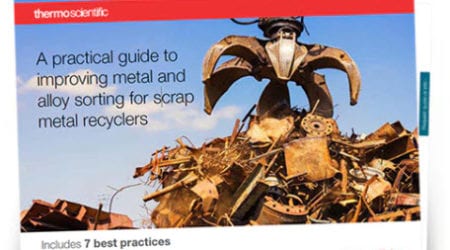 Platinum group metals, especially platinum, palladium, and rhodium, have excellent catalytic properties and are widely used in industrial and renewable energy processes. Platinum catalysts, for example, are used in the production of silicones, high-octane gas, and petrochemical feedstocks, which are used to make plastics, synthetic rubber, and polyester fibers. They are also used in catalytic reforming, which creates high-octane gasoline for cars. Because of these and numerous other applications, the platinum group metals are in high demand, but they are rare and expensive. (Read Platinum Group Metals at Work: Industrial Applications.)
Platinum group metals, especially platinum, palladium, and rhodium, have excellent catalytic properties and are widely used in industrial and renewable energy processes. Platinum catalysts, for example, are used in the production of silicones, high-octane gas, and petrochemical feedstocks, which are used to make plastics, synthetic rubber, and polyester fibers. They are also used in catalytic reforming, which creates high-octane gasoline for cars. Because of these and numerous other applications, the platinum group metals are in high demand, but they are rare and expensive. (Read Platinum Group Metals at Work: Industrial Applications.)
In the last few years, cobalt has emerged as an industrial catalyst with the potential to replace the more expensive metals. The Los Alamos National Laboratory reported that low-cost cobalt is an effective catalyst that may have applications in such energy-related technologies as production of biofuels and reduction of carbon dioxide. LANL scientists were able to capture the cobalt atom in a complex molecule in such a way that it can mimic the reactivity of precious metal catalysts in a wide range of circumstances.
Several recent studies present further evidence of cobalt’s potential as a catalyst; here are highlights from two of the most recent ones:
Researchers at the Institute of Chemical Research of Catalonia (ICIQ) have evaluated molybdenum and cobalt-based materials as catalysts for generating high-purity hydrogen in PEM (polyelectrolyte membrane) cells, a process that typically uses platinum and iridium catalysts. The research group found that these materials show reasonable and promising activity in PEM electrolysis and that when PEM cells operate at high potentials (1,8 – 3 V), cobalt-based catalysts show even higher activity than platinum catalysts.
Rice University researchers published findings in Advanced Materials that cobalt film is much better at producing hydrogen than most state-of-the-art materials, and is competitive with (and much cheaper than) commercial platinum catalysts. They reported the catalyst also produced an oxygen evolution reaction comparable to current materials. The researchers suggested that applying alternating current from wind or solar energy sources to cobalt-based electrolysis could be an environmentally friendly source of hydrogen and oxygen.
Catalytic activity is influenced by the physical and chemical interactions that occur at the surface or at the interfaces of a material’s layers. Many of the problems associated with catalyst performance can be solved only by understanding surface chemistry. Metal-based catalysts are typically used for redox reactions, so careful control of the metal oxidation state is required to ensure that the catalyst performs successfully. The identification of increased levels of oxidation enables the analyst to determine the quality of the surface of the catalyst.
X-ray photoelectron spectroscopy (XPS) is an excellent technique for this type of characterization. XPS is an extremely surface-sensitive technique which can identify and quantify both elemental compositions and the chemical states of the elements detected.
Read Investigating the Oxidation of a Cobalt-based Catalyst Using X-ray Photoelectron Spectroscopy to learn how an XPS system was used to analyze a γ-alumina supported Co(Ni)MoS hydrodesulfurization catalyst to obtain chemical state information from both a fresh and air exposed sample and determine the type and level of chemical change the catalyst underwent when exposed to air.






Leave a Reply